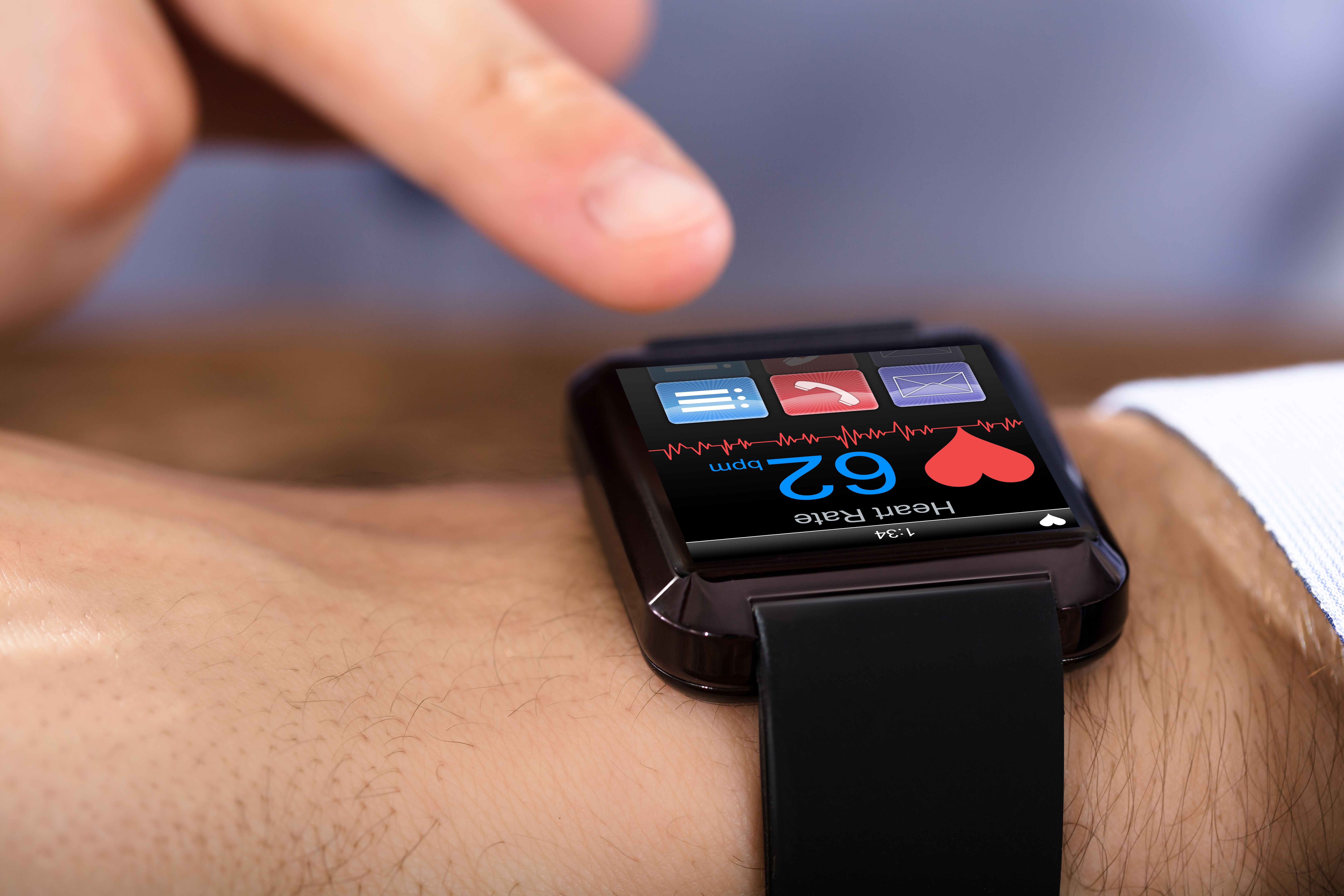- CDC
- Heart Failure
- Cardiovascular Clinical Consult
- Adult Immunization
- Hepatic Disease
- Rare Disorders
- Pediatric Immunization
- Implementing The Topcon Ocular Telehealth Platform
- Weight Management
- Monkeypox
- Guidelines
- Men's Health
- Psychiatry
- Allergy
- Nutrition
- Women's Health
- Cardiology
- Substance Use
- Pediatrics
- Kidney Disease
- Genetics
- Complimentary & Alternative Medicine
- Dermatology
- Endocrinology
- Oral Medicine
- Otorhinolaryngologic Diseases
- Pain
- Gastrointestinal Disorders
- Geriatrics
- Infection
- Musculoskeletal Disorders
- Obesity
- Rheumatology
- Technology
- Cancer
- Nephrology
- Anemia
- Neurology
- Pulmonology
Wearable Device Uptake Low Among Adults with Cardiovascular Disease, Nationally Representative Study Finds
AHA 2022: An estimated 18% of Americans with heart disease reported using wearables, compared with 29% of the total US population.

Persons who are most likely to benefit from wearable health devices, such as smart watches, may be less likely to use them, according to preliminary research presented at the American Heart Association (AHA) Scientific Sessions 2022, held in Chicago and virtually, November 5-7, 2022.
Specifically, approximately 18% of Americans with cardiovascular disease (CVD) and 26% of persons at risk of CVD used wearable devices, compared to 29% of the total US population, according to researchers led by Lovedeep S. Dhingra, MBBS, a postdoctoral research fellow in the Cardiovascular Data Science Lab at the Yale School of Medicine in New Haven, Connecticut.
Of note, the researchers also found that more than 80% of wearables users at risk for CVD said they would be willing to share data from a wearable device to improve their health care.
“We may be able to use artificial intelligence with health information from wearable devices to help people reduce their risk of heart disease,” said Dhingra in an AHA press release. “Given these benefits, it is crucial to understand who is using these devices. In our study, we evaluated how many adults with heart disease or at risk for heart disease used wearables. We also looked at whether wearables’ use was equitable among patients of different age groups, sex, education, income levels and diverse racial and ethnic groups.”
Dhingra and colleagues used the nationally representative Health Information National Trends Survey (HINTS) study for 2019-2020 to examine the self-reported use of wearable devices among patients with CVD (ischemic heart disease or heart failure) and those with risk factors (hypertension, diabetes, smoking, and/or obesity).
Researchers evaluated patterns of wearable use across demographic subgroups of age, sex, race, income, and education along with the willingness to share data for health care applications.
“Even though the survey did not ask participants about specific types of wearable devices, examples of wearable devices were included to help respondents answer the question about whether or not they had used a wearable device in the previous 12 months. The most common wearable devices included smart watches and fitness bands at the time of the survey, though the category continues to expand to include other devices,” stated Dhingra.
Of the 9303 adults in HINTS, 933 had CVD (mean age, 69 years; 47% women) and 5185 were at risk of CVD (mean age, 59 years; 58% women).
Results showed that among participants with or at risk of CVD, certain demographic subgroups had the lowest use of wearable devices.
Despite representing 49% and 22% of the CVD and at-risk populations, only 12% and 14% of adults aged ≥65 years reported any wearable use in the past year, compared with 17% and 25% in the 50-64-year group, and 33% for both in the 18-49-year group. Also, a higher annual household income and education attainment was associated with 3- to 4-fold higher wearable use.
Among wearable users, 81% of adults at risk of CVD stated they would favor sharing wearables data to improve their care without differences across demographic subgroups, according to investigators.
“We were surprised to find that people with cardiovascular disease were notably less likely than people without cardiovascular disease to use wearable devices, which suggests those who are most likely to benefit from these technologies appear to be less likely to use them,” concluded Dhingra in the release. “We need to ensure that wearable devices reach the people who need them most, by improving equitable access and promoting wearables as health devices to help improve health and decrease health disparities.”
Among the study’s limitations are that wearable use was self-reported, and only approximately 33% of all respondents answered the question about wearables, so it may not accurately reflect wearable use in the US.
Reference: Dhingra LS, Aminorroaya A, Oikonomou E, Nargesi AA, Khera R. Use of wearable devices by patients with and at-risk for cardiovascular disease in the United States: A nationally representative study. Abstract presented at the American Heart Association Scientific Sessions 2022; November 1-4, 2022; Chicago, IL.
